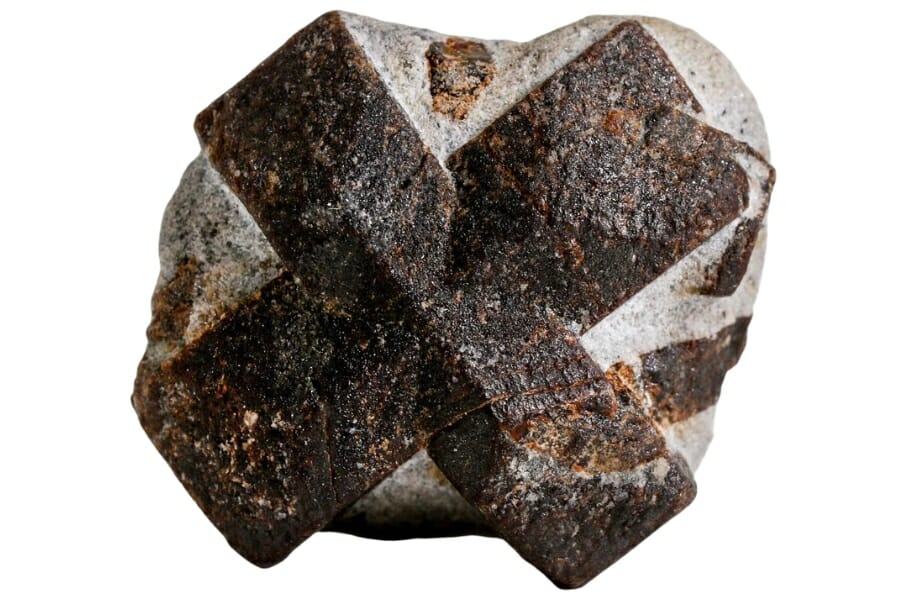Georgia is a treasure trove of rocks, minerals, gems, and crystals that dazzle the eye and stir the imagination. With a variety that spans from sparkling quartz to deep-red garnets, there’s something for everyone to discover and admire. And our state’s rich geological history has created this colorful tapestry.
In the North Georgia mountains, you’ll find a wealth of wonders like the beautiful amethyst. Head over to Graves Mountain, and you might unearth the eye-catching rutile.
Georgia’s landscapes are dotted with fascinating geological landmarks, each offering a unique window into the Earth’s history.
The beauty and diversity of the different types of rocks found in Georgia make them not only valuable to collectors but a source of inspiration and education for everyone here. And finding them is a hands-on way to connect with our state’s incredible natural heritage!
A List of The Common Rocks, Stones, and Minerals Found in Georgia
While natural treasures like beautiful rocks, minerals, gems, and crystals are widespread in Georgia, it doesn’t mean they’re easy to find. You will need expert guidance in order to locate them, so we created helpful, comprehensive guides that you can use in your exploration here:
Georgia Mineral and Gem
First, let’s get to know the amazing natural wonders that represent our state.
| Georgia State Mineral | Staurolite |
| Georgia State Gem | Quartz |
We also encourage you to get familiar with our state’s local collecting guidelines before heading out here. You can visit the official website of the Georgia Department of Natural Resources (GA DNR) to know more about these guidelines.
Always Confirm Access and Collection Rules!
Before heading out to any of the locations on our list you need to confirm access requirements and collection rules for both public and private locations directly with the location. We haven’t personally verified every location and the access requirements and collection rules often change without notice.
Many of the locations we mention will not allow collecting but are still great places for those who love to find beautiful rocks and minerals in the wild without keeping them. We also can’t guarantee you will find anything in these locations since they are constantly changing.
Always get updated information directly from the source ahead of time to ensure responsible rockhounding. If you want even more current options it’s always a good idea to contact local rock and mineral clubs and groups
Tektite
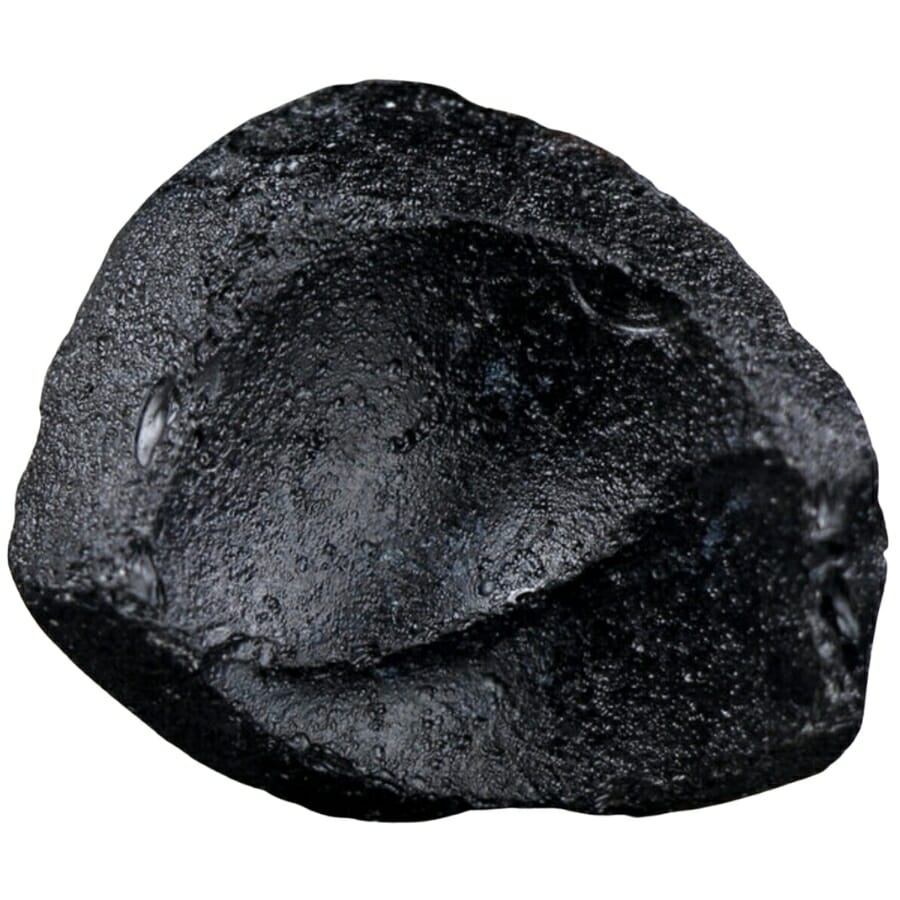
Tektite is an out-of-this-world rock! Literally, it comes from space. Imagine a huge meteorite crashing into Earth. When that happens, the heat and force are so intense that they melt the rocks around the impact site. That melted material then splashes up into the air, cools down, and forms glassy tektite!
Because of how they’re formed, tektites have a very unique and intriguing appearance. Some look like drips of black or dark green glass, while others might have a more rounded or irregular shape. Each piece tells a story of the incredible collision that created it.
People value this mineral for many reasons. Rock collectors find them fascinating because of their space origin. Some people even think they have mystical powers! Scientists study them to learn about meteorite impacts and the Earth’s past.
Where you can find Tektite in Georgia
You can find tektite if you pay a visit to the following sites:
- Surrounding fields of Dubois area in Empire County
- Jay Bird Springs area in Dodge County
- Osierfield area in Irwin County
Oolite
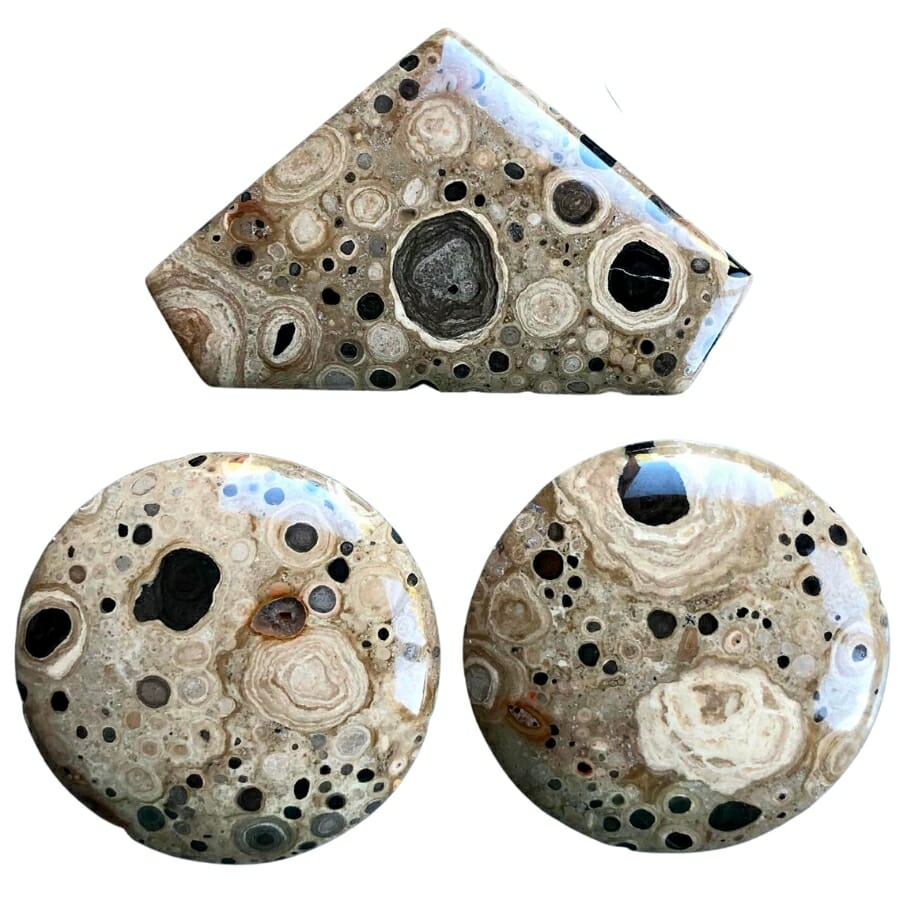
Oolite is a fascinating type of rock that looks like it’s made of tiny eggs. The word “oolite” actually comes from the Greek word for “egg” and “stone.” These little egg-like particles are often the size of a pinhead, and they’re what make this rock so interesting.
Its formation starts in warm, shallow seawater that’s rich in minerals like calcium. In these waters, tiny grains of sand or shell fragments become coated with layer upon layer of minerals. Over time, these layers build up around the grain, forming the “egg” shape. It’s like a pearl forming inside an oyster, but much smaller.
Interestingly, oolite can be cut and polished into beautiful tiles or decorative items. In some places, oolitic limestone is used as a building material because of its unique look and strength. Quick trivia: it was even used to build the Pentagon and Empire State Building!
Where you can find Oolite in Georgia
Explore the road leading to Spring Place in Bibb County and Fincher Bluff in Murray County to find oolite specimens.
Staurolite
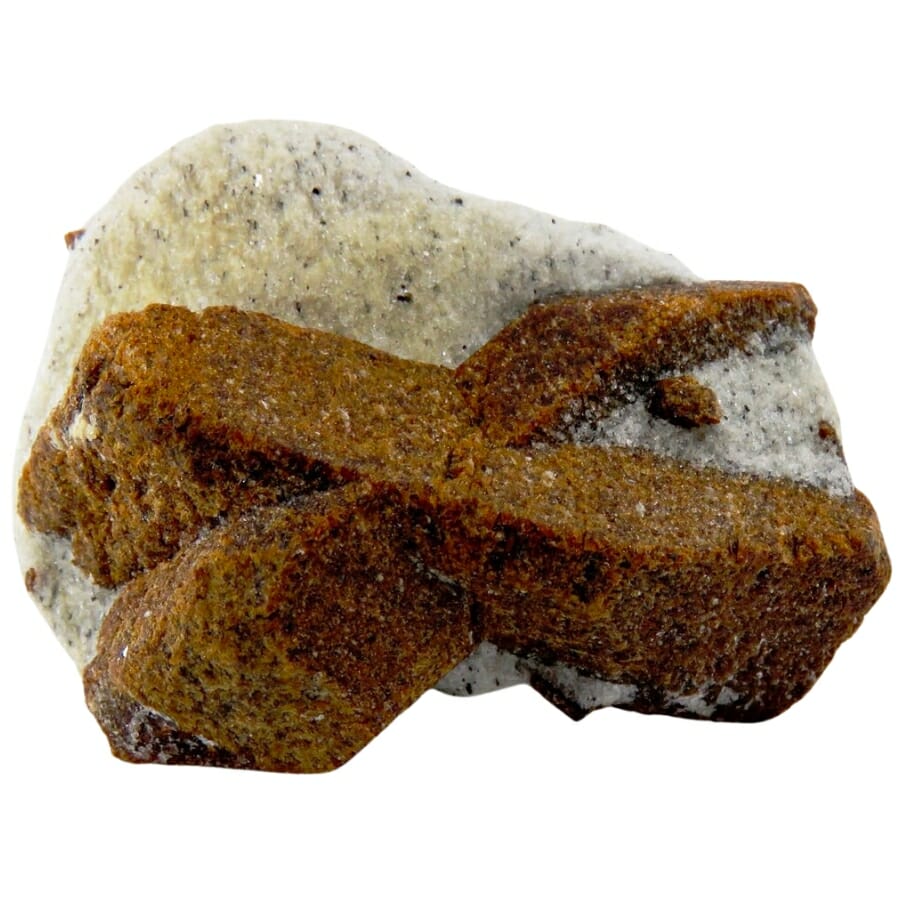
Staurolite is an exciting and special mineral, often known as “fairy stone” or “fairy cross.” Its name comes from the Greek words for “cross” and “stone” because it often forms in cross-shaped crystals.
These formations are what make people love staurolite, giving it a magical and mystical feel.
It’s usually created deep underground when rocks are heated and squished together over millions of years. This heating and squeezing cause the elements in the rock to mix and form staurolite.
You might think of it like baking a cake, where ingredients combine and transform with heat.
Here, this mineral is a bit of a local celebrity. In fact, staurolite is Georgia’s official state mineral! You can find two types of crosses in the state’s staurolite: one that looks like a “T” and another that forms a perfect “X.” These shapes are rare in the rest of the world, so that makes Georgia’s staurolite extra special.
Where you can find Staurolite in Georgia
You can find staurolite countywide in Cherokee County, especially in the following places:
- Oscar Roberston farm
- Sharp Mountain Creek
- J.M. Speark Farm
Halloysite
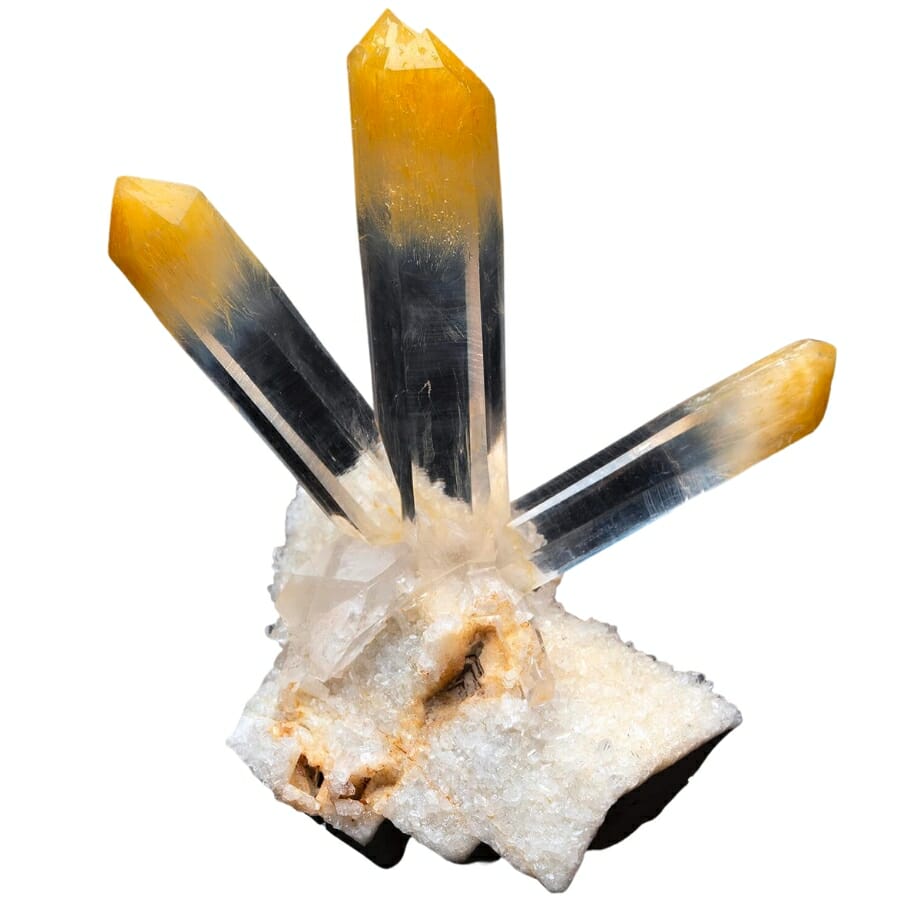
Halloysite is a super cool type of clay mineral that often looks like tiny rolled-up tubes under a microscope. It might not seem much to the naked eye, but up close, it’s like a miniature world of scrolls!
It’s created when certain rocks, like feldspar, break down over a very long time. Rain, wind, and natural chemicals can wear away these rocks, turning them into something new and exciting. In the right conditions, halloysite forms its unique tube-like structure.
Halloysite’s shape makes it perfect for some pretty amazing uses. Scientists can use those little tubes to deliver medicine inside the human body. It’s also used in making porcelain, which makes dishes and toilets, and in beauty products like face masks.
Where you can find Halloysite in Georgia
To find halloysite, you can search through a hill located in the Rising Fawn area in Dade County.
Chert
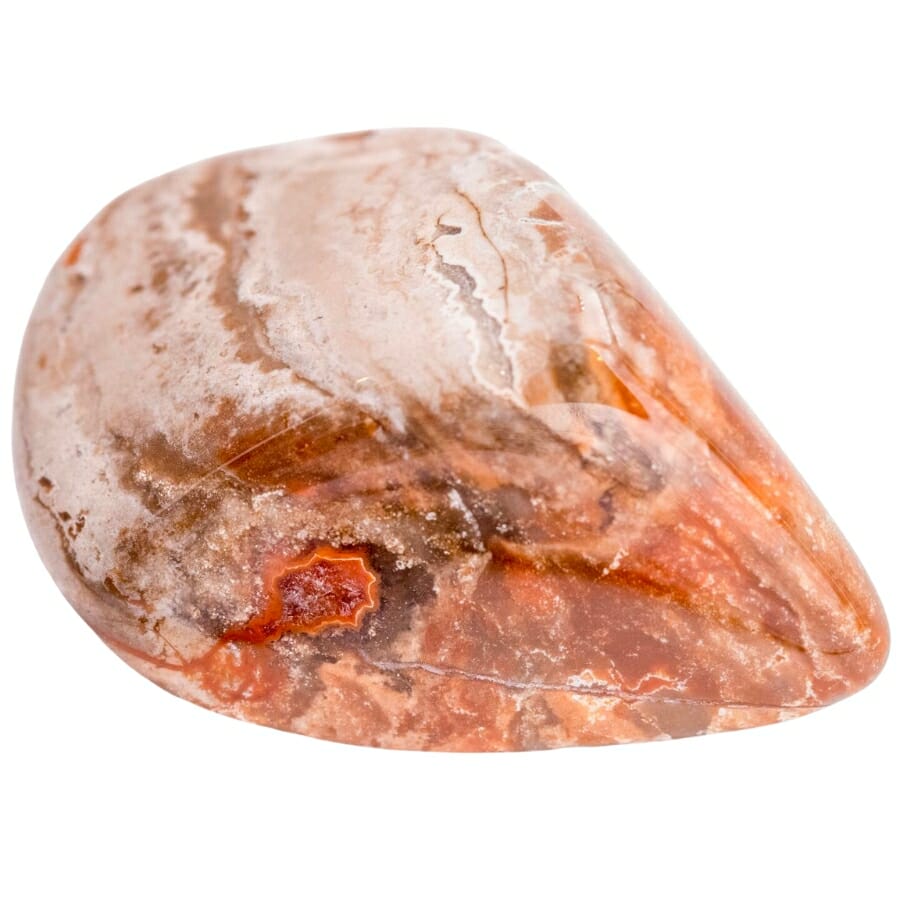
Chert is a hard and often glassy-looking rock that comes in many colors like white, brown, or even green. It forms in deep-sea floors where tiny creatures called diatoms live.
When they die, their shells fall to the bottom and pile up. Over a very long time, these shells get squished and heated, transforming into chert.
In ancient times, this rock was used to make tools and arrowheads because of its sharp edges when broken. Today, it’s studied by scientists to understand our planet’s past. Its unique formation helps them learn about ancient oceans and the creatures that once lived there.
In Georgia, you can find chert in various places, especially in the northern part of our state. It’s often mixed with other rocks and can be found in limestones and other formations.
Where you can find Chert in Georgia
We recommend exploring the following places, among others, to find chert in our state:
- Summerville area in Chattooga County
- Bauxite area mines of Hermitage area in Floyd County
- Shoreline of Sinclair Reservoir in Hancock County
Mica
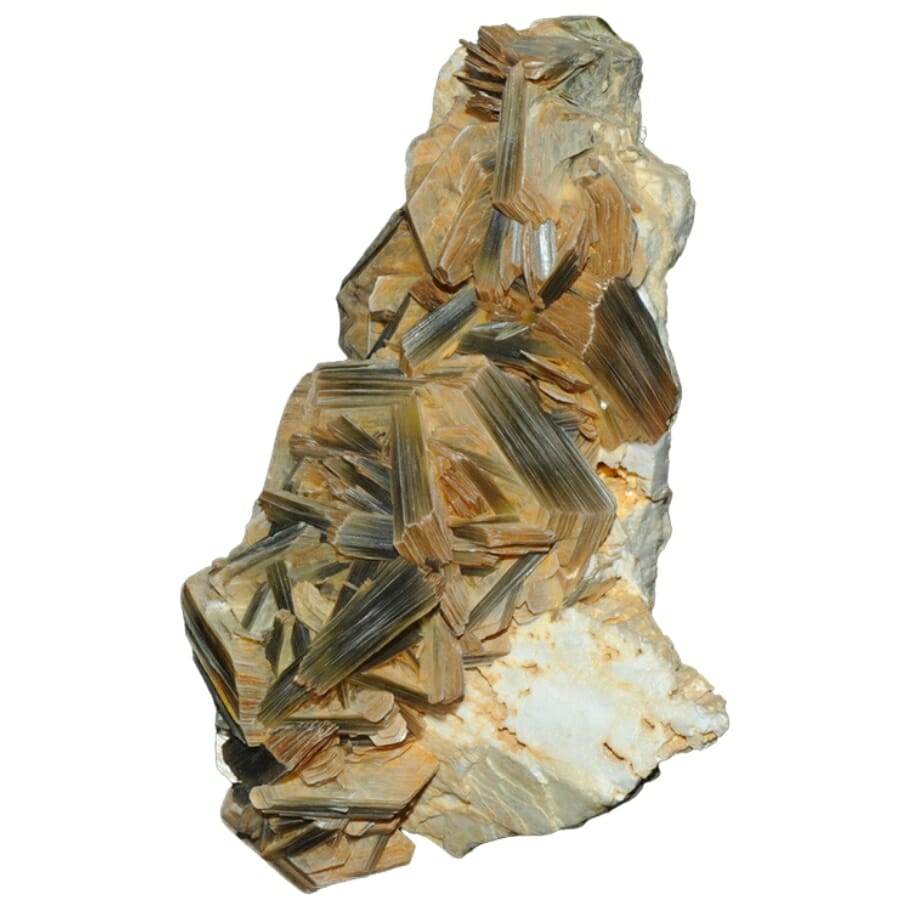
Mica is a shiny mineral that you can often find in rocks, and it looks like tiny sheets or flakes that sparkle in the sunlight.
This mineral is created deep underground where heat and pressure work together to change other minerals into mica. Sometimes, it’s formed in volcanic rocks as well.
The cool thing about mica is that it’s made up of thin layers, and you can peel them apart like the pages of a book! It’s used in electronics, like your computer or phone, because it’s a good insulator. It’s also used in makeup to add shimmer and in paint to make it sparkle.
Where you can find Mica in Georgia
You can find mica on the following sites in our state:
- Minerals Processing Company Mine in Troup County
- Amphlett Mica Mine (Franklin Mine) in Cherokee County
- Barren Fullerton farm in Jasper County
The Gemstones Found In Georgia
Georgia is not only rich in different rocks and minerals— it’s also brimming with uniquely beautiful gems! If you’re on the quest to look for them, make sure to have our handy guide with you:
Quartz
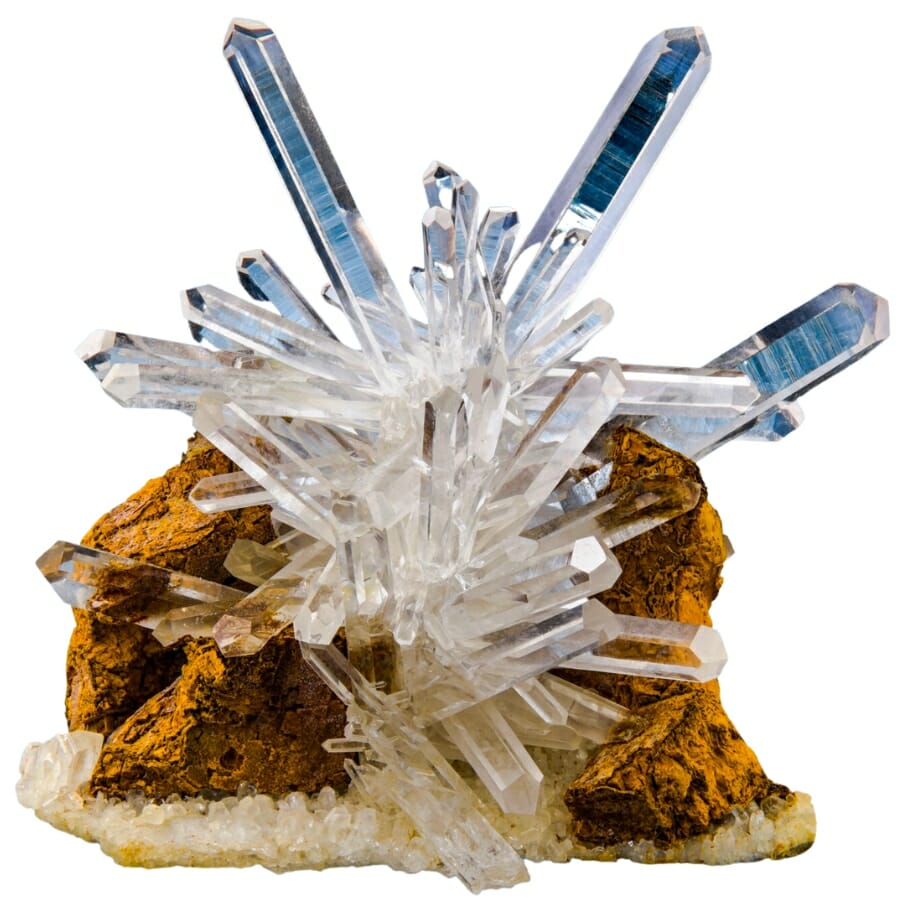
You’ve probably seen this shiny and clear gem and admired its sparkle. Quartz is one of the most common gems on Earth, but that doesn’t make it any less fascinating.
The value of quartz is because of all kinds of reasons. It’s hard and durable, so it’s great for making jewelry. Its clear and sparkly appearance makes it a favorite for decorations. Plus, some people believe that quartz has special healing powers!
Here in our state, you can find different types of quartz, like rose quartz, which is a lovely pink in hue, and smoky quartz, which has a mysterious smoky color. There’s also the clear and classic variety that looks like ice.
Where you can find Quartz in Georgia
If you’re planning on finding quartz, you can explore these sites in our state:
- Kell Mica Mine in Rabun County
- Belmont Hills in Cobb County
- Dawnsonville area mines in Dawnson County
Beryl
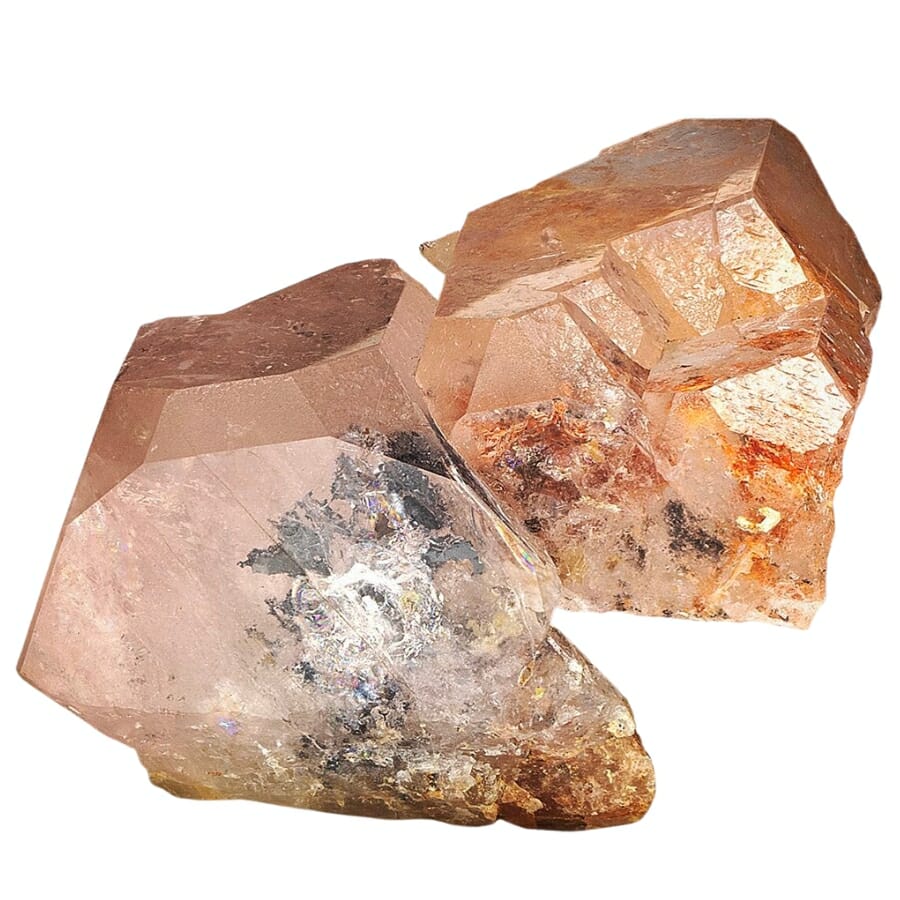
Beryl is created deep within the Earth’s crust in molten rock called magma. As this magma cools down, its crystals start to form. Sometimes, beryl even grows inside other rocks! Its different colors, like green and blue, come from tiny amounts of other elements mixed in with the beryl.
This gem is treasured by many for its breathtaking beauty and rarity. Jewelers turn it into stunning rings, necklaces, and other pieces. Its various colors make it even more special and desired by gem collectors.
The varieties of beryl you can find in our state are usually clear or pale-colored. Nonetheless, they’re just as fascinating as their more colorful counterparts!
Where you can find Beryl in Georgia
Beryl can be found in quite a few places in our state, including:
- Cochrane Mine in Cherokee County
- Alps Road in Clarke County
- Hartwell Dam access road in Hart County
Jasper
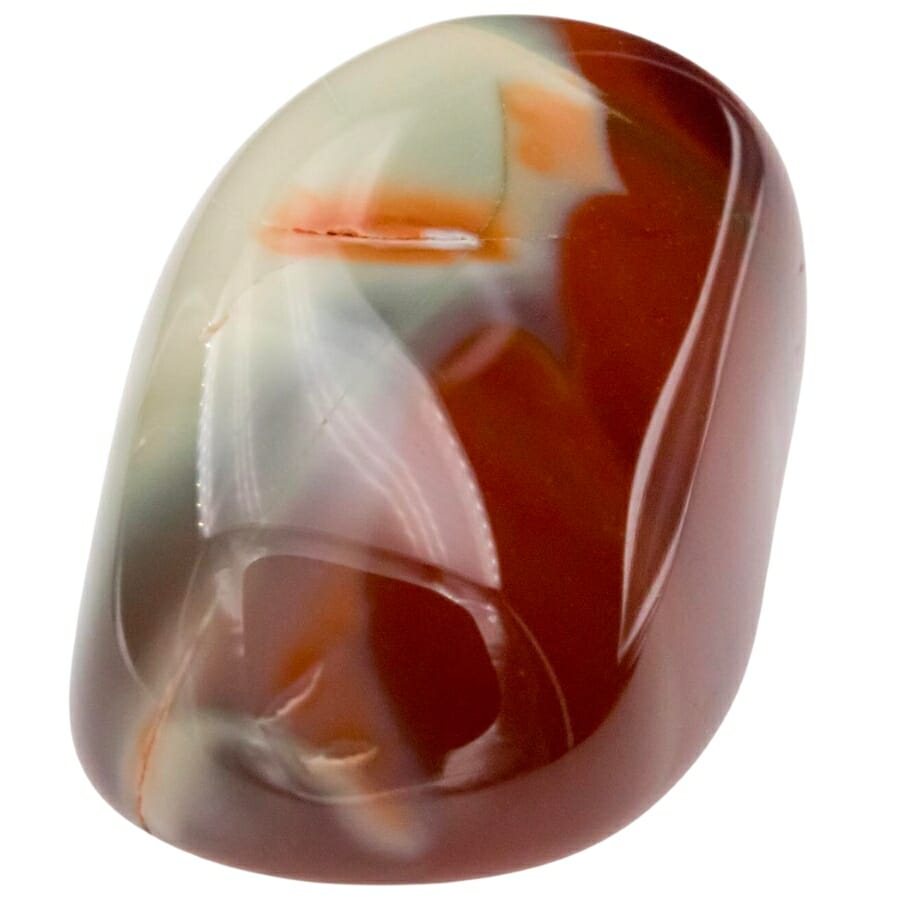
Jasper comes in all sorts of beautiful colors and patterns. Reds, browns, yellows, and greens— this gem just shows off nature’s creativity! It starts out as a liquid filled with tiny particles. Over time, this liquid hardens, and the particles get stuck in place, creating the stunning patterns we see in jasper.
How much jasper is worth is based on its many uses. Ancient civilizations used it to make tools, jewelry, and even sculptures. Today, it’s still popular for jewelry and decorations. Its variety of colors and designs makes each piece unique and special.
Georgia’s northern area has the right rocks and conditions for forming jasper. And while our deposits here might not be as colorful as some other types, it’s still a beautiful part of our state’s geological treasure.
Where you can find Jasper in Georgia
To find jasper, you can visit different places in our state, such as:
- State farm in Milledgeville, Baldwin County
- Saltpeter Cave in Bartow County
- Flint River in Dougherty County
Garnet
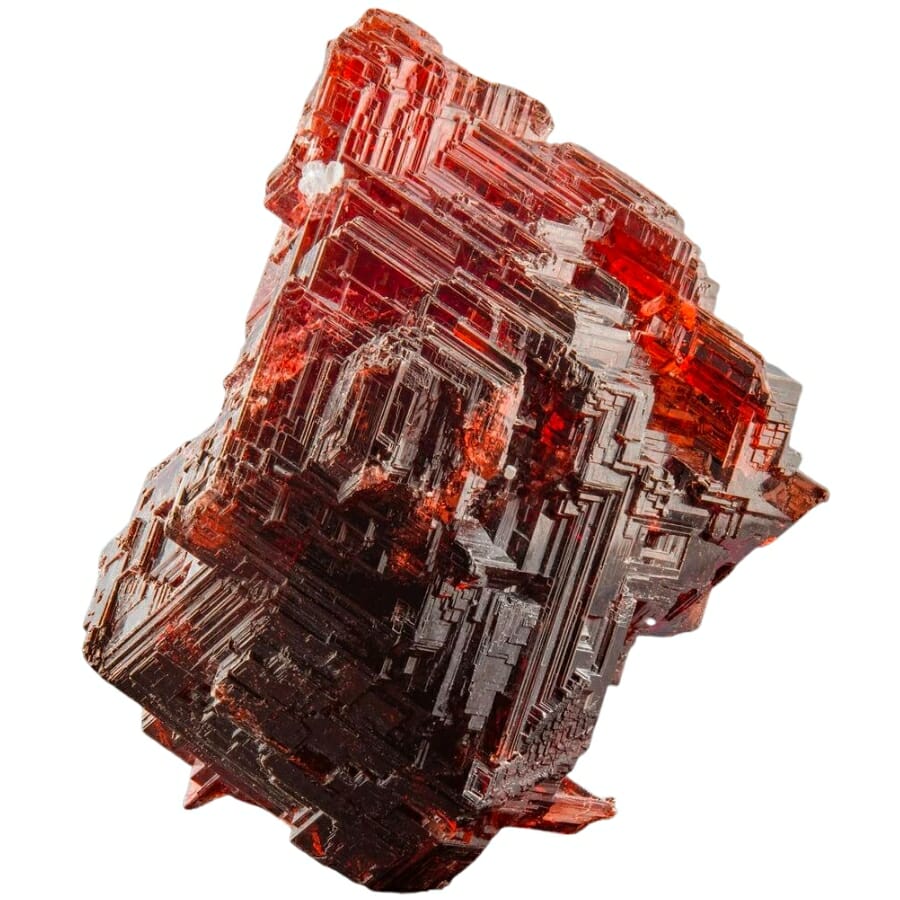
Garnet is like the fireworks of the gem world, bursting with deep reds, oranges, and even some greens! It’s made deep underground with intense heat and pressure. These conditions cause the atoms of different minerals to rearrange and form garnet crystals.
Garnet is adored for its bold and fiery appearance. It’s been used for thousands of years in jewelry and as a symbol of love and friendship. Besides looking beautiful, it’s also used in sandpaper because it’s so hard and tough. All these contribute to garnet’s overall value and worth.
You can find different types of garnets in our state, like almandine, which is deep red, and pyrope, which has a brighter red color.
Where you can find Garnet in Georgia
We recommend paying a visit to the following sites to spot garnets:
- Amphlett Mica Mine (Franklin Mine) in Cherokee County
- Ernest Strozier farm in Meriwether County
- Hiram area in Paulding County
Aquamarine
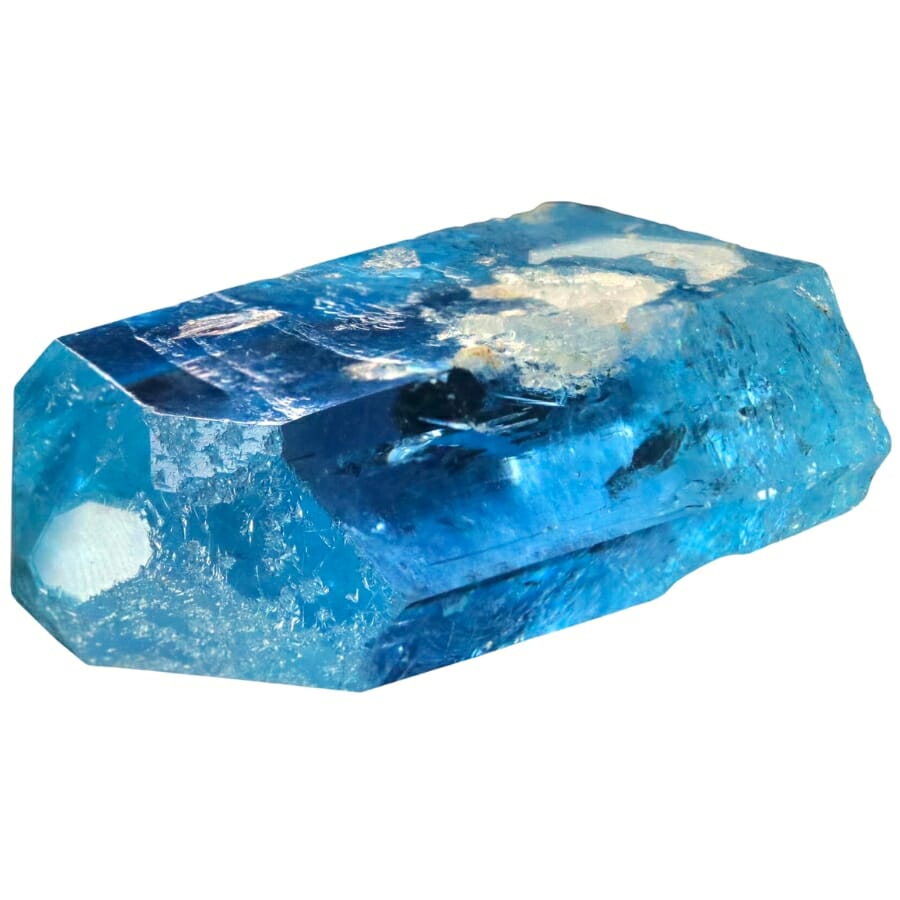
Aquamarine is like a splash of the ocean captured in a gem. Its name even comes from the Latin words for “water” and “sea.” This beautiful blue or blue-green gem is truly something to behold!
It’s a type of beryl that grows deep inside the Earth’s crust. As hot liquid rock cools, aquamarine crystals start to form. Its blue color comes from small amounts of iron that get mixed in with the beryl.
Aquamarine’s high value is primarily because of its calming and serene color. Often used in jewelry like rings and necklaces, it’s considered a symbol of happiness and everlasting youth. Some even believe that it has healing powers!
Where you can find Aquamarine in Georgia
If you’re eyeing to go on a search for aquamarine here, make sure you visit these places:
- Adair plantation in Morgan County
- Ralph Crook property in Pickens County
- Little Broad River at the Yellow Hill Mine in Elbert County
Amethyst
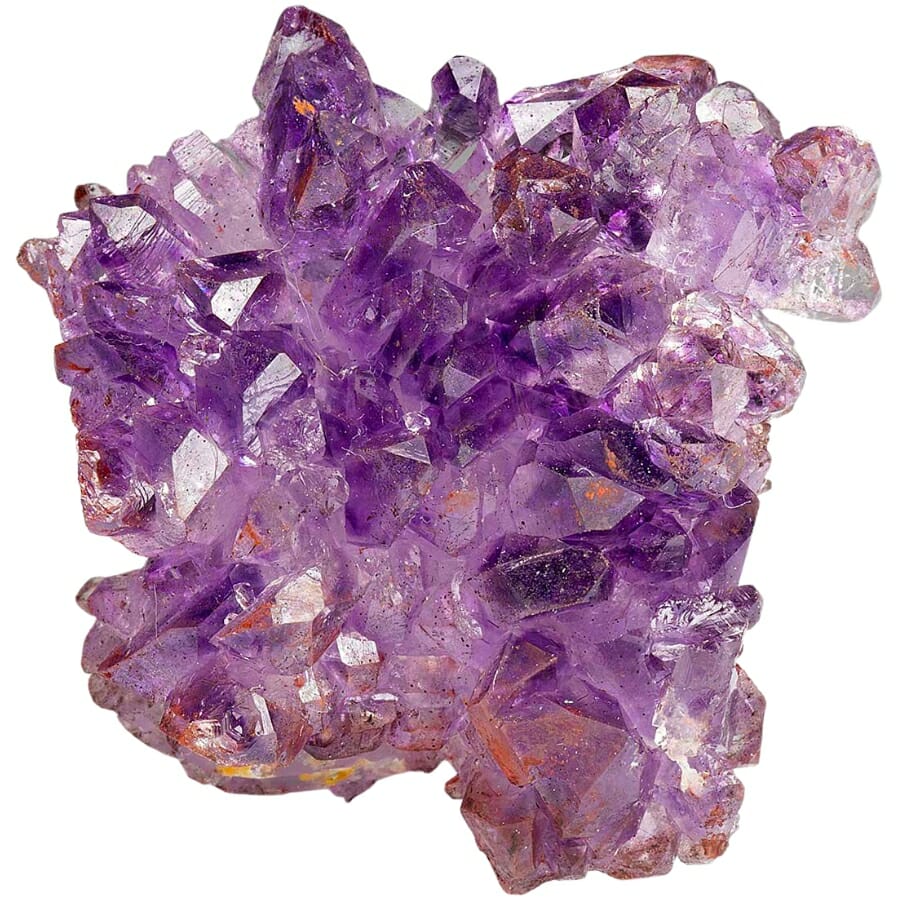
Amethyst is like the royal gem of the mineral world with its dazzling shades of purple! Its name comes from the Greek word for “not drunk,” because ancient people believed it could prevent intoxication.
It’s actually a type of quartz that gets its purple color from small amounts of iron and other minerals. Imagine hot liquid rock cooling down deep in the Earth. As it cools, the atoms come together to form quartz crystals, and if the right ingredients are there, they create amethyst!
Curious about amethyst’s value? Well, its stunning purple hues make it a favorite for jewelry, and it’s also considered a symbol of peace and wisdom. Some even think amethyst has special metaphysical properties that calm the mind.
Where you can find Amethyst in Georgia
To uncover amethyst, we recommend exploring some of these spots:
- Antioch Mine in Elbert County
- Upper Charlie Creek in Rabun County
- Homer Kellin Farm in Fayette County
The Crystals Found In Georgia
Aside from diverse rocks and minerals and gorgeous gems, crystals also abound in Georgia. To help you successfully uncover them, you can use the complete guide that we created to the best crystal mining places here:
Tourmaline
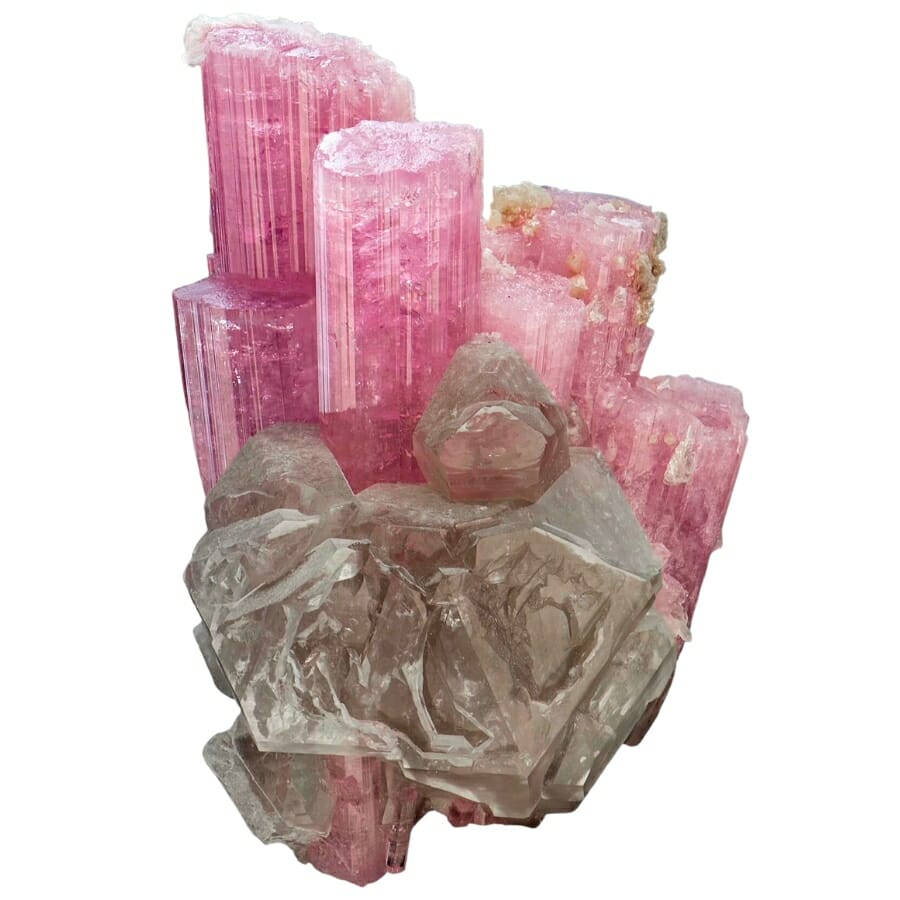
Tourmaline is like a rainbow in a crystal. It can be found in almost every color imaginable— from pitch black to pretty pinks and electric blues. Sometimes, a single crystal can even show multiple colors. Talk about dazzling!
Its formation starts with magma deep in the Earth’s crust. As it cools, different minerals come together to form tourmaline crystals. Its variety of colors is due to different elements that mix with the tourmaline.
This crystal is naturally fascinating because of its incredible range of colors and unique crystal shapes. Often used in jewelry, each color of tourmaline has its own special meaning. For example, pink tourmaline is thought to represent love, while green is connected to life and growth.
Where you can find Tourmaline in Georgia
If you’re seeking tourmaline finds here, you can explore the following sites:
- Several prospects and mines in Centerville, Cherokee County
- Early Vaughn Mine in Lamar County
- T.J. Allen Prospect in Spalding County
Agate
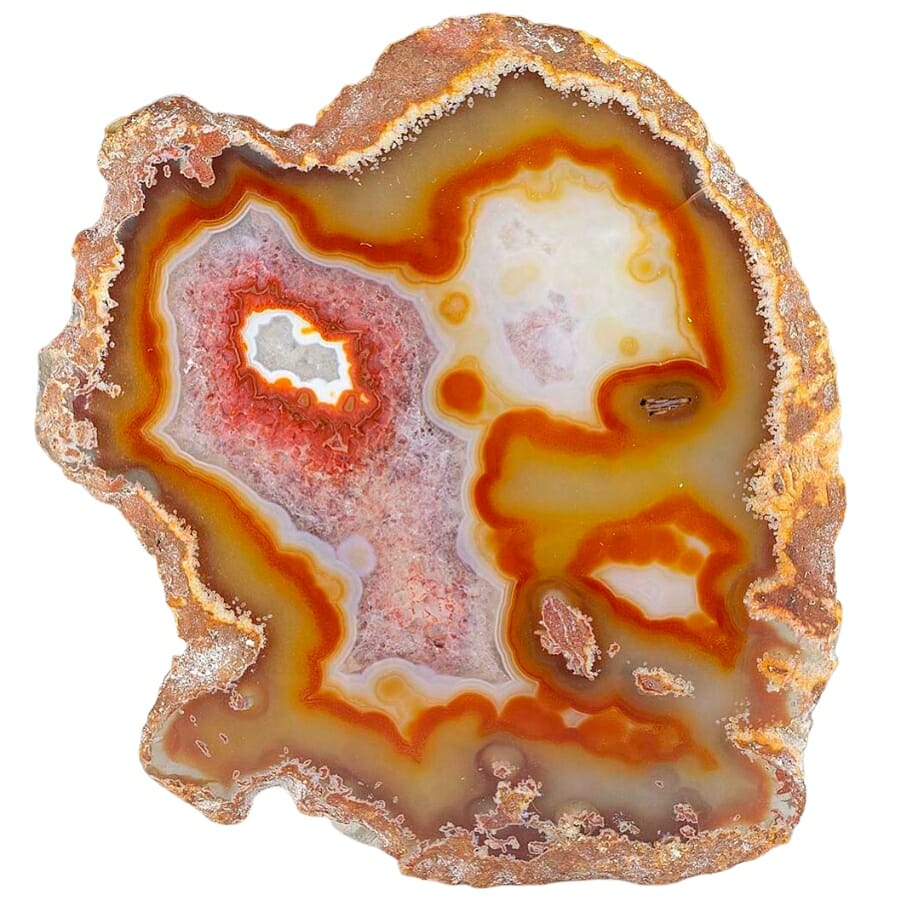
Like a piece of abstract art, agate stuns with its swirling colors and intricate patterns. Imagine a hollow rock deep underground filled with hot liquid minerals.
As this liquid cools, layer upon layer of crystals start to grow, creating beautiful bands and patterns. It’s like making a multi-layered cake, but with minerals!
People love agate for its unique appearance and the way it seems to tell a story in its layers. Some believe that it has calming and healing properties. It’s used in jewelry, decorations, and even some everyday objects like paper knives. All these have boosted agate’s price and value in the market.
In Georgia, areas with volcanic rocks usually contain agates. Our state’s specimens have their own special colors and patterns, adding to the rich variety of this crystal.
Where you can find Agate in Georgia
Agate is widely available in our state, and some of the places where you can find them are:
- Etowah River in Bartow County
- Holton Quarry in Bibb County
- Marietta area in Cobb County
Serpentine
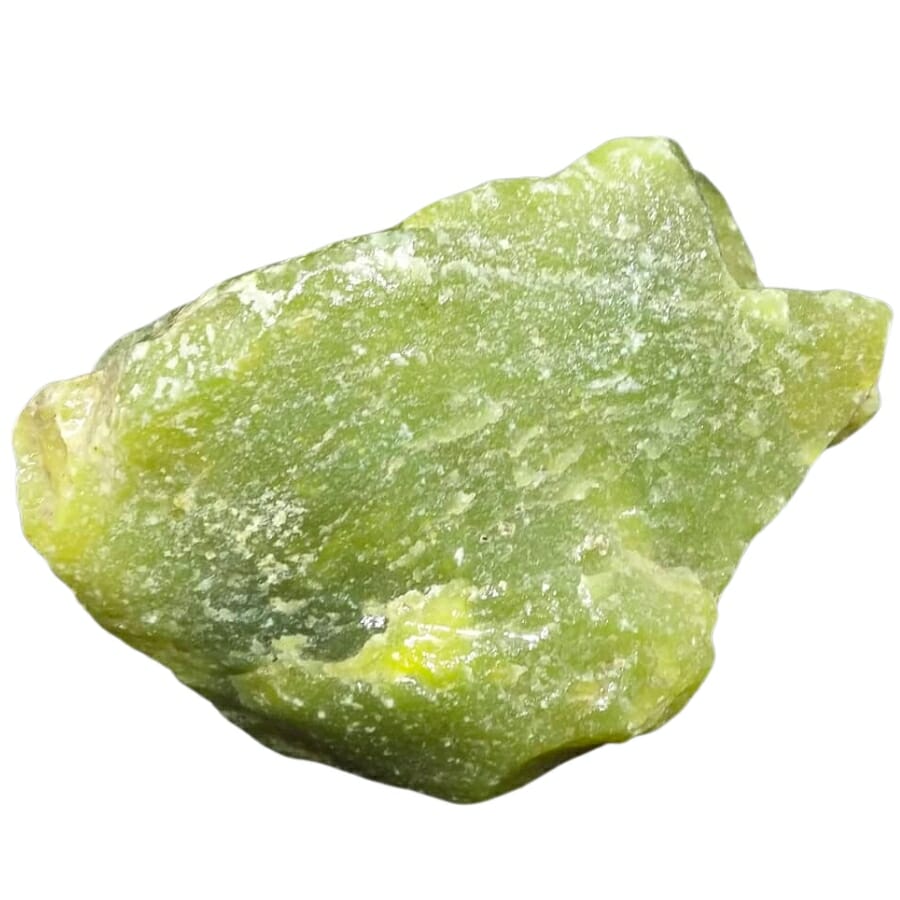
Serpentine is a name that sounds mysterious, and it fits this alluring crystal! It’s a group of minerals that often have a snake-like, green appearance, and it can be as fascinating to look at as it is to say.
This crystal is often created deep within the Earth’s mantle, where there’s lots of heat and pressure. When certain rocks and minerals interact with water, they transform into serpentine.
Because of its unique appearance, it has been used for thousands of years in carvings, decorations, and jewelry. Its earthy green tones and waxy feel make it stand out. Some people also believe serpentine has healing properties.
Where you can find Serpentine in Georgia
We highly recommend visiting these locations if you want to uncover serpentine:
- Summerville area in Chattooga County
- Black Marble Quarry in Gordon County
- Verd Antique Quarry in Paulding County
Muscovite
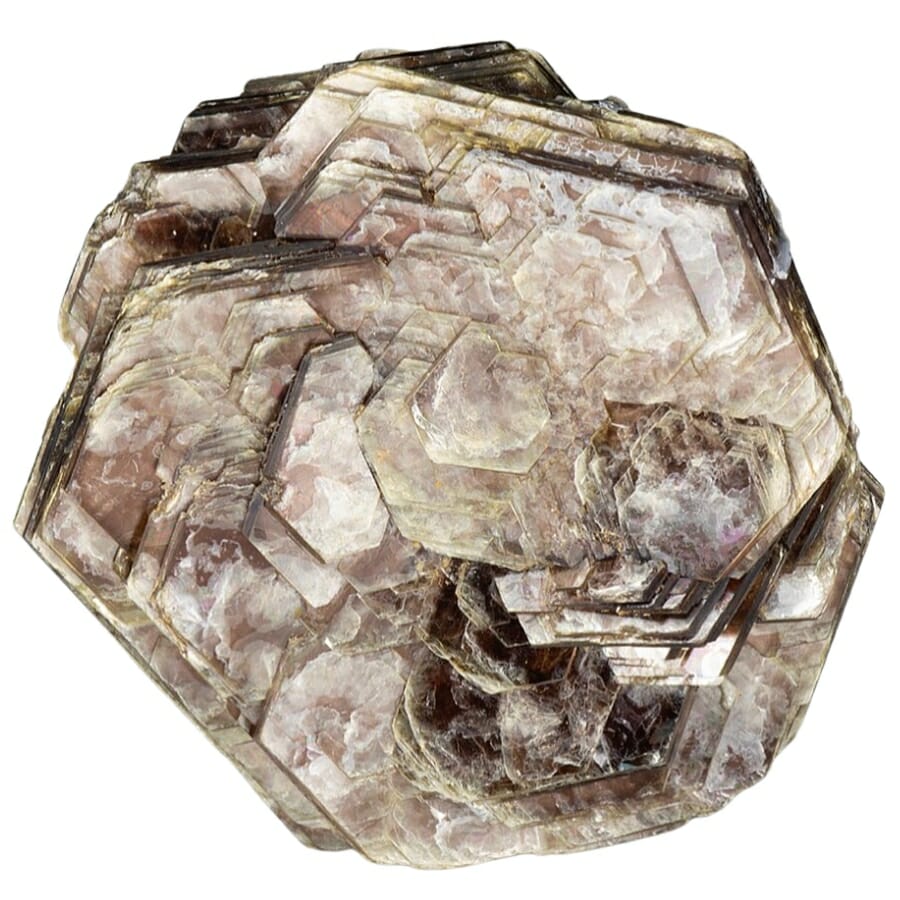
Muscovite has an interesting appearance: it often looks like thin, shiny sheets. It forms deep in the Earth’s crust, where intense heat and pressure make the magic happen.
Certain rocks and minerals come together, and voilà, muscovite is born! Its layers form in such a way that they can easily be split into thin sheets.
Muscovite’s sparkly appearance makes it great for decorations. In fact, it has even been used in creating windows. Its special properties also make it useful in electronics, like cell phones and radios.
The muscovite that you can find in our state could show off unique colors and qualities, adding to its charm.
Where you can find Muscovite in Georgia
If you want to find muscovite here, you can visit:
- Ocmulgee River in Rockdale County
- Peters Mine in Monroe County
- Dickins Mine in Oconee County
Malachite
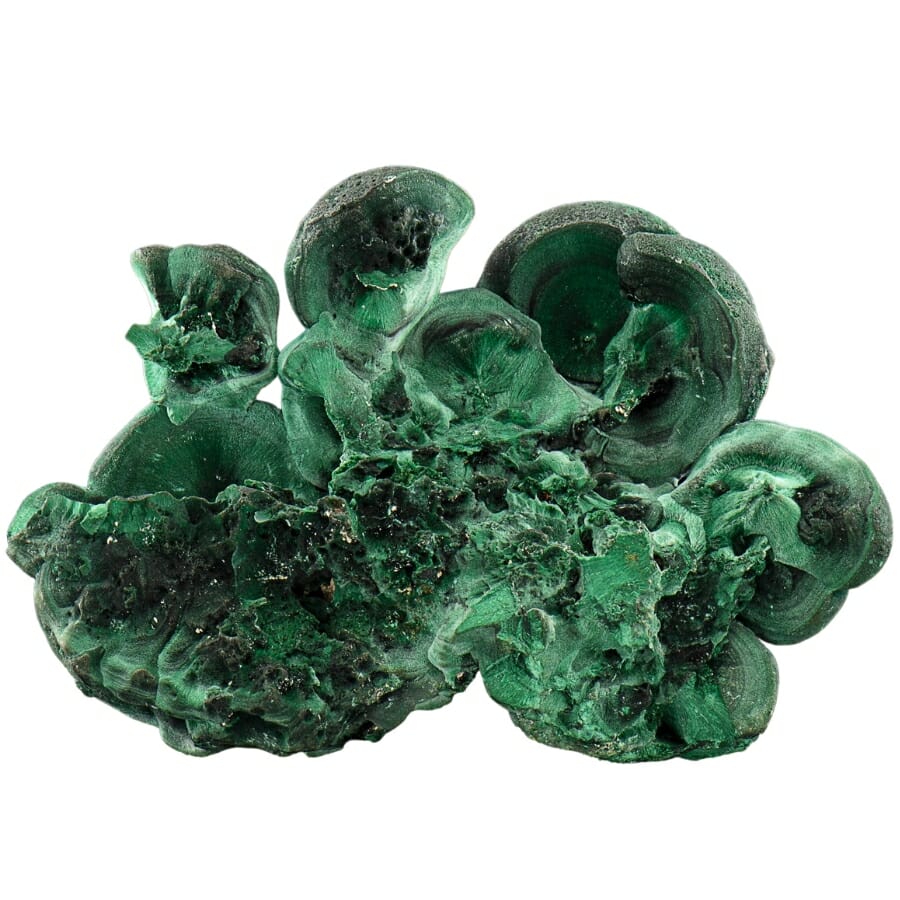
With its vibrant green color and beautiful patterns, malachite is definitely a head-turner! It’s born when water rich with minerals like copper flows over rocks. Over time, the minerals and the rocks react, creating this incredible green crystal.
For thousands of years, malachite’s worth has been recognized for many reasons. Its bright color and mesmerizing patterns make it perfect for jewelry and decorations.
Ancient Egyptians even believed it had protective powers, and they used it in amulets. Historically, it’s also been used as a pigment for paint and is even dubbed as the oldest known green pigment in the world.
Where you can find Malachite in Georgia
You can find malachite in the Amphlett Mica Mine (Franklin Mine) in Cherokee County.
Calcite
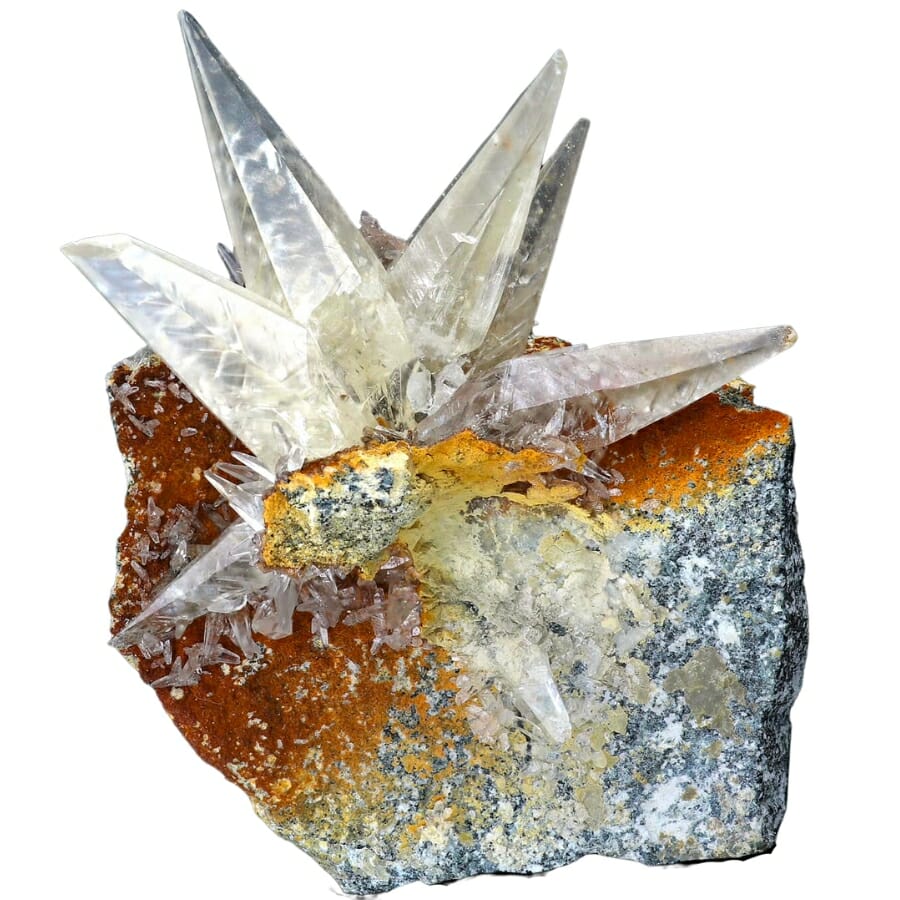
Calcite may be super common among crystals, but that doesn’t make it any less awesome! It’s usually formed in caves or bottom of the ocean.
Whenever there’s water with dissolved calcium carbonate, calcite crystals can grow. The coolest part? It can form in so many shapes and colors.
You might be wondering how valuable calcite is. First, it’s famous for something called “double refraction.” If you put it over words, it makes them look double! It’s usually used in the construction and medicine industry, and even in the manufacturing of toothpaste.
You have the best chance of finding calcite in caves or limestone areas in our state. Our specimens here could be clear, white, or even have hints of color, making each piece unique and special.
Where you can find Calcite in Georgia
To find calcite, you can hunt on the following sites:
- Tate area quarries in Pickens County
- Ledbetter Quarry in Floyd County
- Black Marble Quarry in Gordon County
The Most Valuable Rocks and Minerals in Georgia
Now that we’re done discussing the most common rocks, minerals, gems, and crystals in Georgia, you might be interested to know about the value and often rare finds here.
Gold
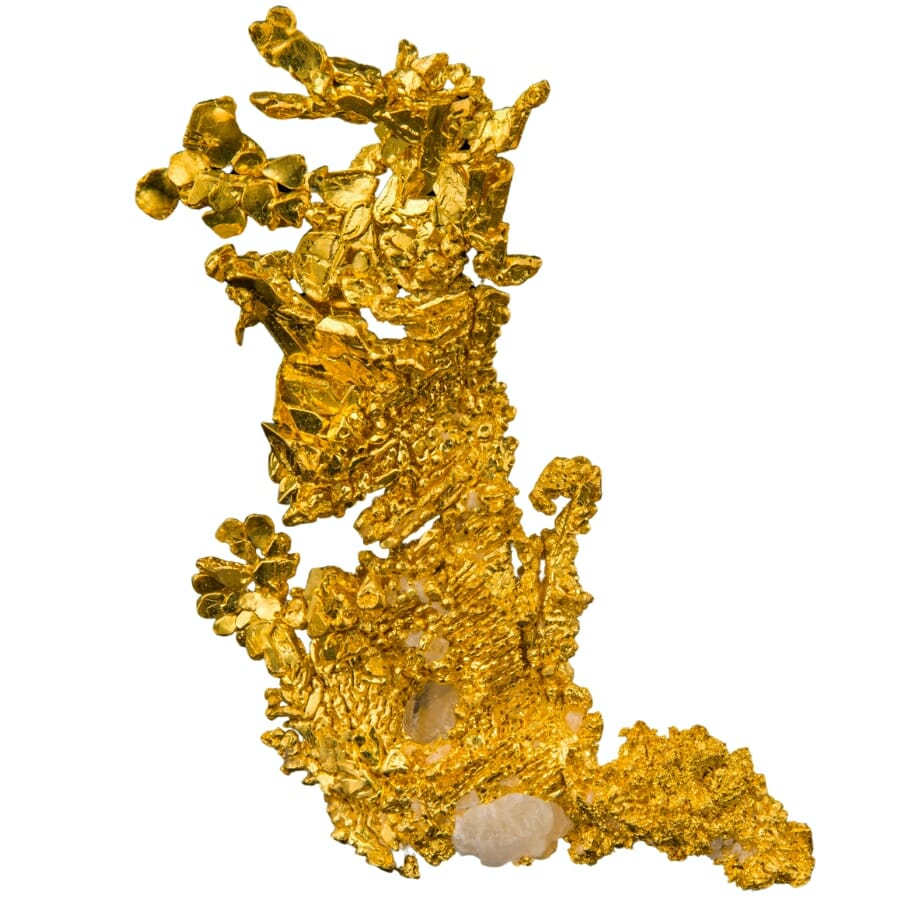
Gold: just its name sparkles with excitement. You’ve seen it in jewelry, coins, and maybe even in movies about treasure hunters. But did you know you can find it here in Georgia?
Gold forms deep inside the Earth, in places that are super hot and packed with pressure. Volcanoes then bring it closer to the surface, where it can be found in rocks and streams.
Now, why is gold so treasured? First, its bright yellow color doesn’t tarnish, so it stays shiny forever. It’s also rare, which makes it feel special. Gold is also easy to shape into all kinds of things like rings, necklaces, and medals.
Aside from its look, gold is useful too! People use it on computers, smartphones, and even in spaceships. Its unique properties make it perfect for lots of different purposes.
Where you can find Gold in Georgia
You can uncover gold in the Little River, Columbia Mine, Hamilton Mine, McGruber Mine, Park Mine, and Seminole Mine in McDuffie County.
Ruby

Ruby’s fiery red color captures the imagination and the hearts of people everywhere. Its formation is just as special as it looks.
It forms when aluminum and oxygen, with a sprinkle of chromium (which gives it an amazing red color), get heated and squeezed underground.
Ruby’s high price is a testament to how well-loved this gem is. First off, its color is incredible! A perfect ruby glows like a red ember, and people can’t help but fall in love with it. Rubies are also super tough— only diamonds are harder! That means a ruby can last for generations, becoming a family treasure.
This gem is also rare, especially the ones with the perfect shade of red. It’s used in all kinds of jewelry, from rings to crowns, making them a symbol of love, passion, and power.
Where you can find Ruby in Georgia
You can spot ruby in the following specific sites:
- Tallapoosa River in Carroll County
- Stonepile Church in Habersham County
- Tugaloo Overlook Mine in Stephens County
Opal
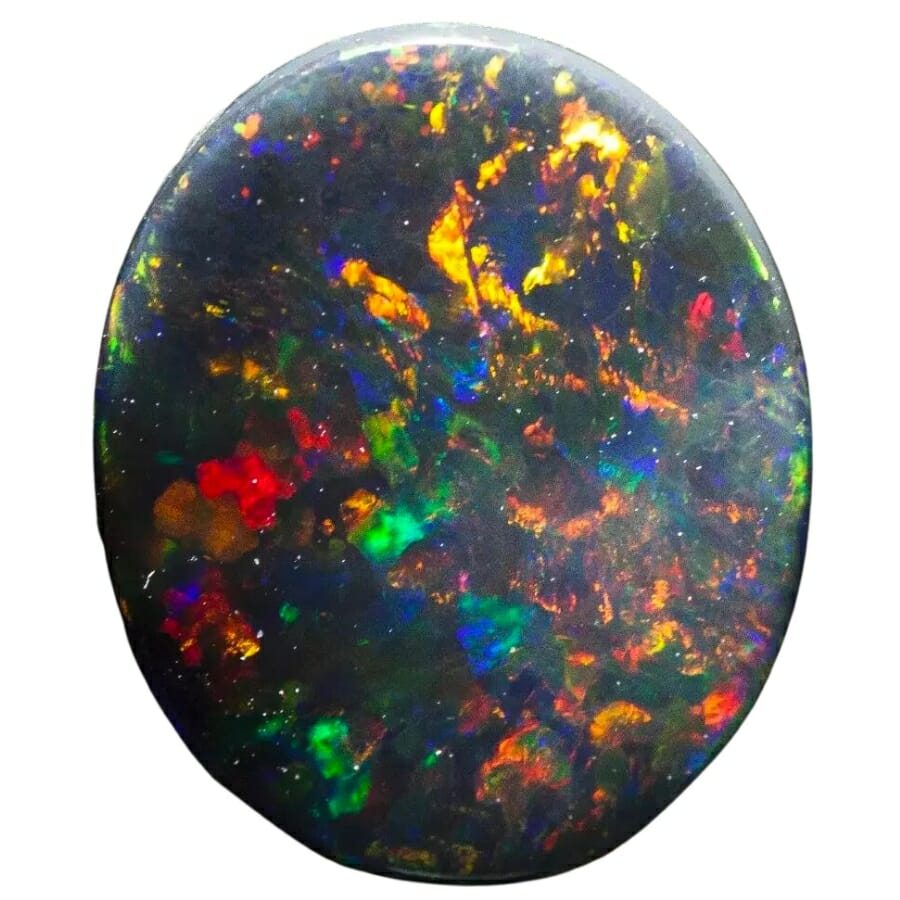
Opals are like fireworks trapped inside a rock! When you look at them, you can see a whole rainbow of colors dancing and sparkling.
They’re created when tiny spheres of silica gather together in cracks or cavities underground. Over time, water dries up, and the silica sticks together.
What makes opals so valuable? First, their beauty is breathtaking. Every specimen is unique, with its own special pattern of colors. It’s like having a one-of-a-kind piece of art. Plus, opals can be rare, especially the ones with bright, lively colors. That makes them even more special.
People love to use this gemstone in jewelry because they can match any outfit with its array of colors. They’re often seen as symbols of hope and creativity because of their lively appearance.
Where you can find Opal in Georgia
Opal is found countywide in Heard County, especially in the stream valleys of the Chattahoochee River tributaries.
How to Identify The Rocks and Minerals You Find
Without proper guidance, it can be a real challenge to properly identify rocks and minerals. But did you know that there are easy and doable ways to identify specimens without using special equipment or doing complicated procedures? Try doing the following:
Observe its color and luster (if any)
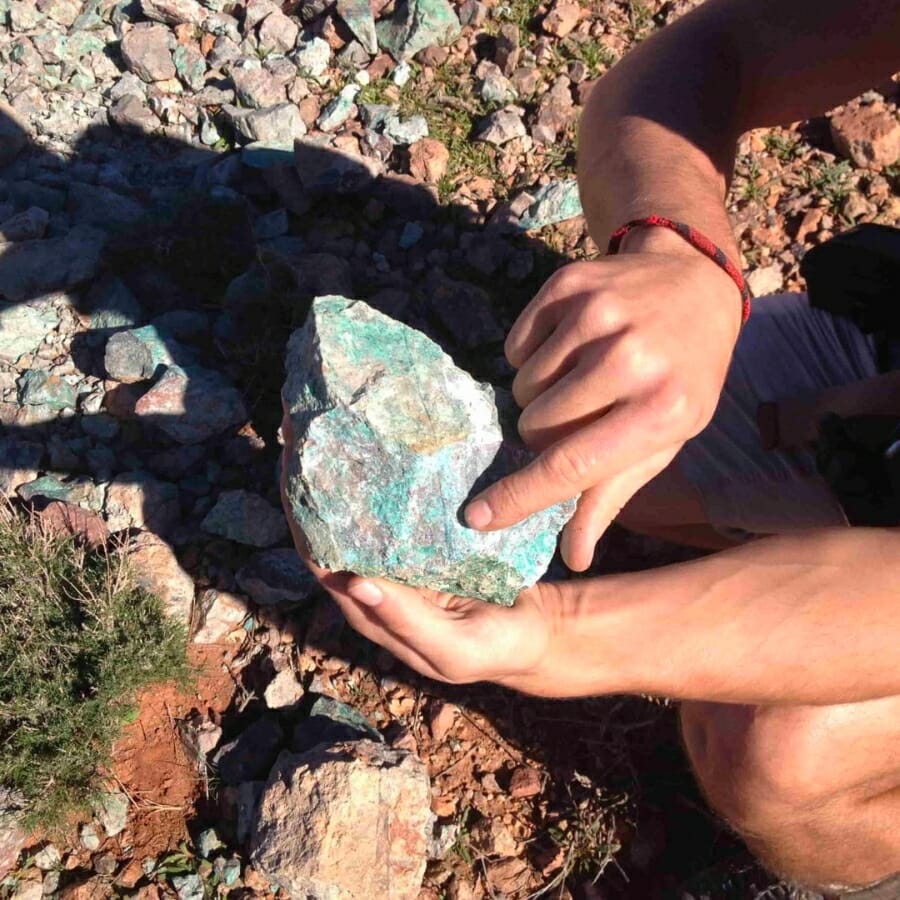
The most obvious feature of a rock or mineral is its color. Though not always definitive, observing the color can provide a clue to what it might be. But don’t rely on color alone as impurities can change a specimen’s color. Just take it as a first step.
Also, look at how the rock or mineral reflects light. Is it shiny like metal or more like glass? Does it have a waxy or dull appearance? This quality is called luster and can be a clue to identifying your specimen.
Conduct a streak test
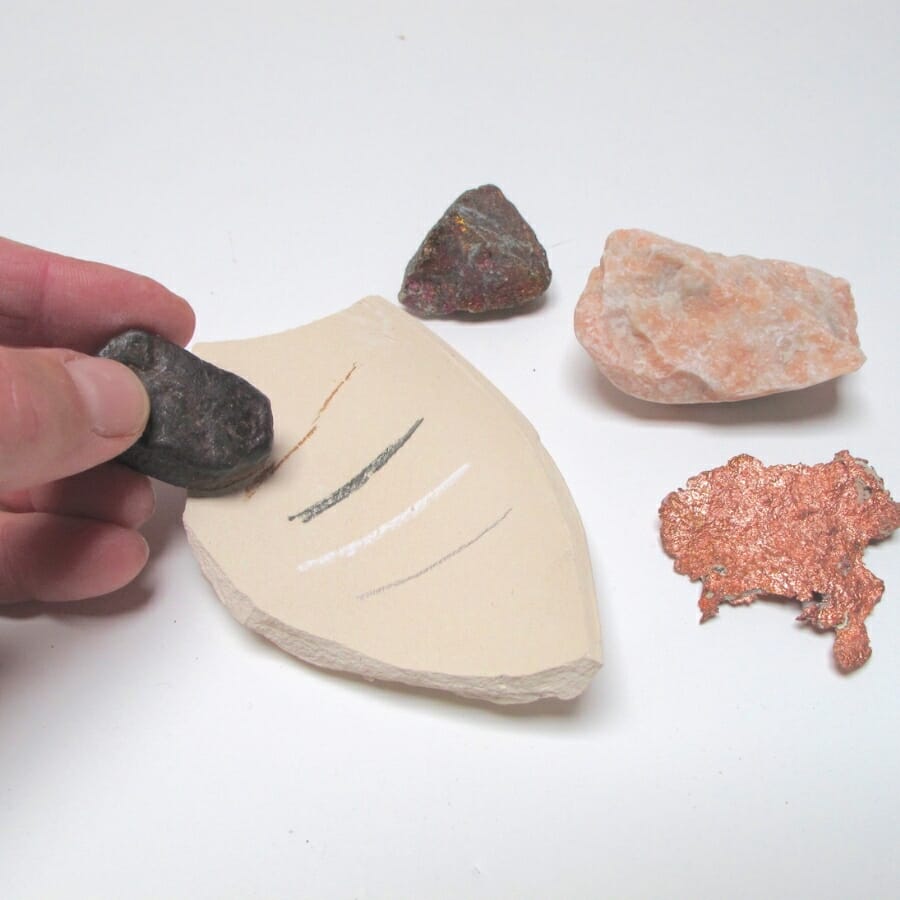
By rubbing the rock or mineral on a piece of unglazed porcelain called a “streak plate,” you can observe the color of its powdered form. This streak color is more consistent than the outward appearance and can help you identify your find.
Compare its hardness with different objects
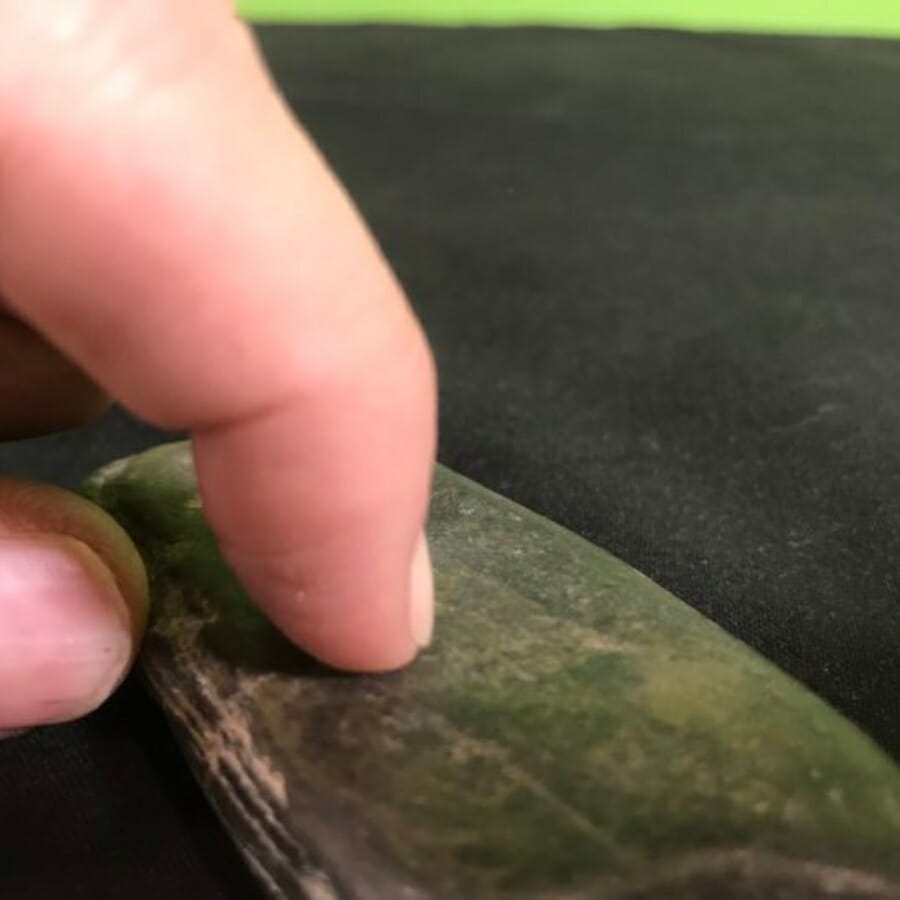
A simple scratch test can reveal a rock or mineral’s hardness. By scratching it with an object with a known hardness level (like your fingernail, a copper coin, or a steel nail), you can compare and classify your find’s hardness.
There’s even a scale called the Mohs scale of hardness that can help you identify your rock or mineral.
See if it will be attracted to a magnet
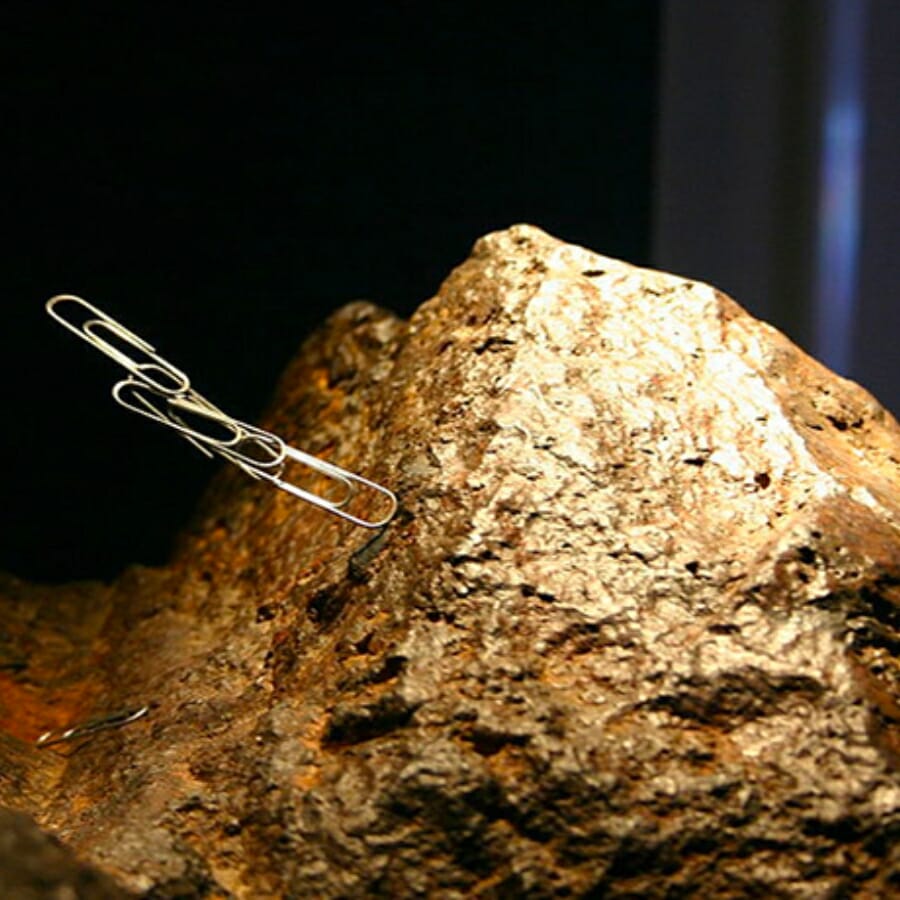
Some minerals have distinct properties, like magnetism. For this, you can use a magnet and see if your specimen will be attracted to it. If it is, then your specimen is among the options that are magnetic in nature.
Consult books or field guide apps
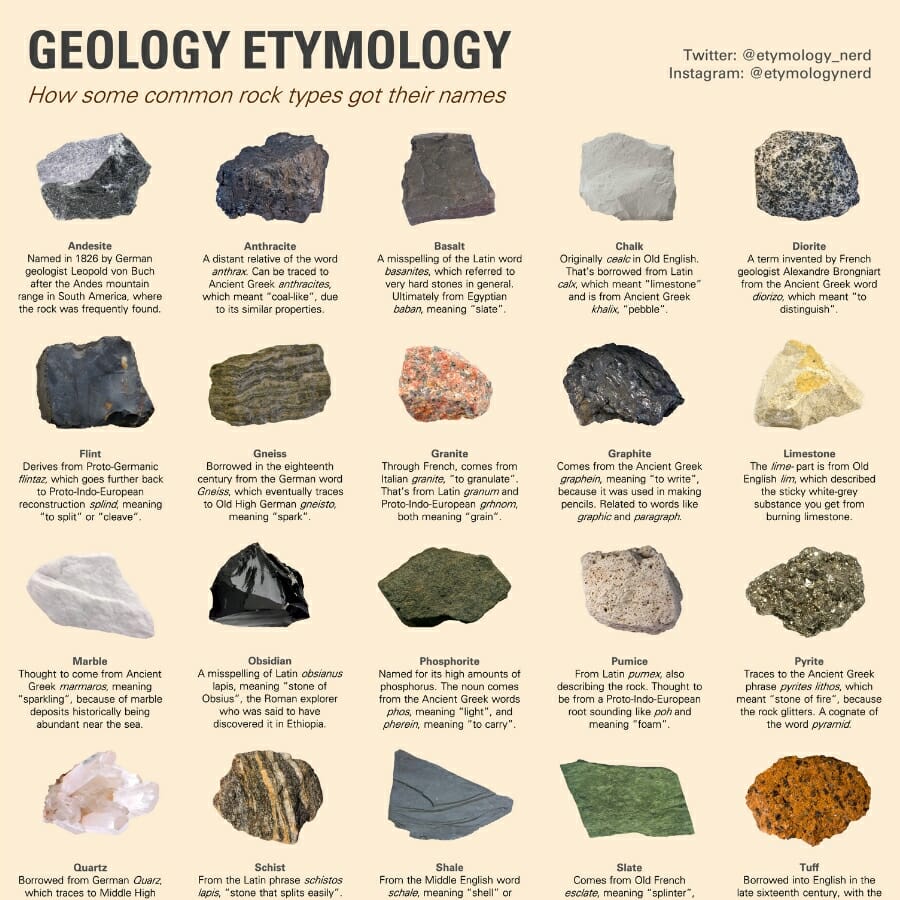
Many books and mobile applications provide visual guides to common rocks and minerals. With clear pictures and descriptions, these can be handy tools for beginner and amateur rockhounds.

